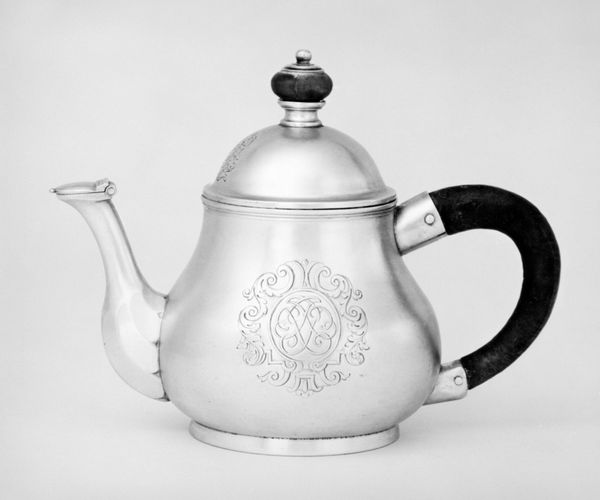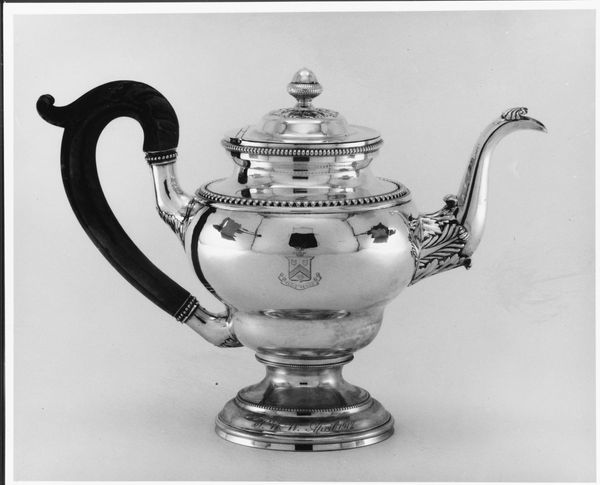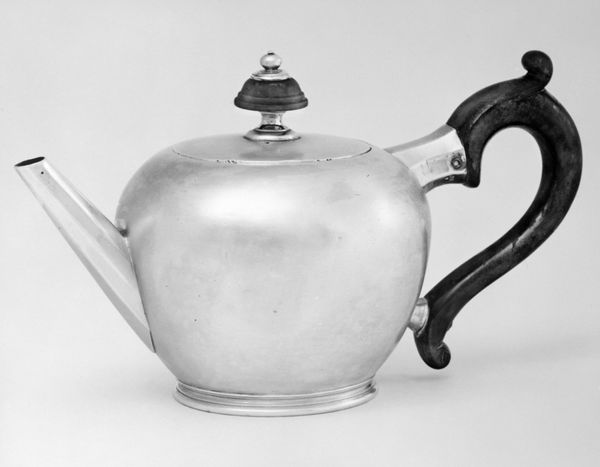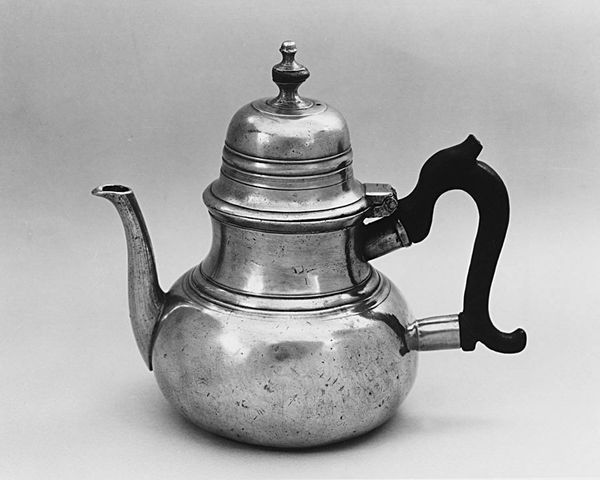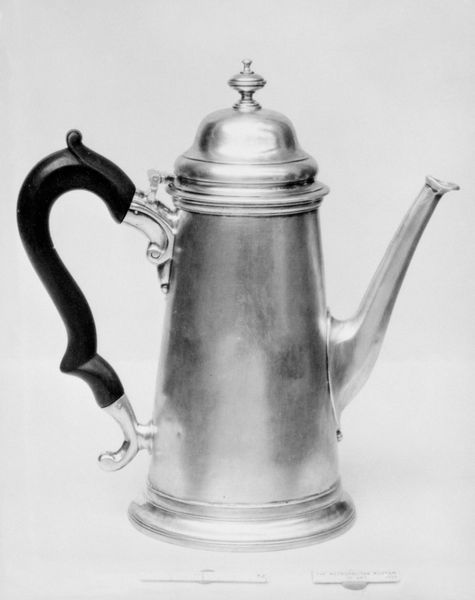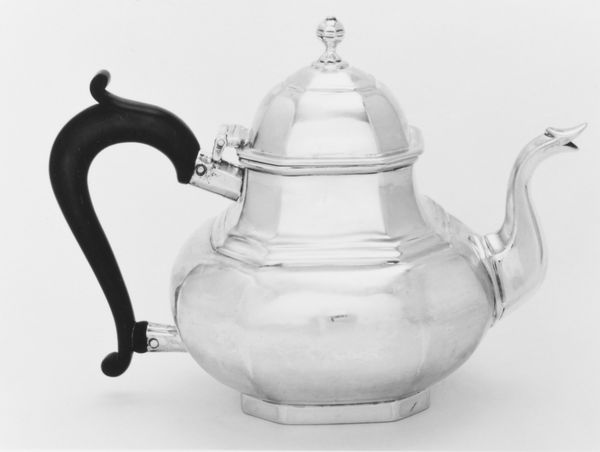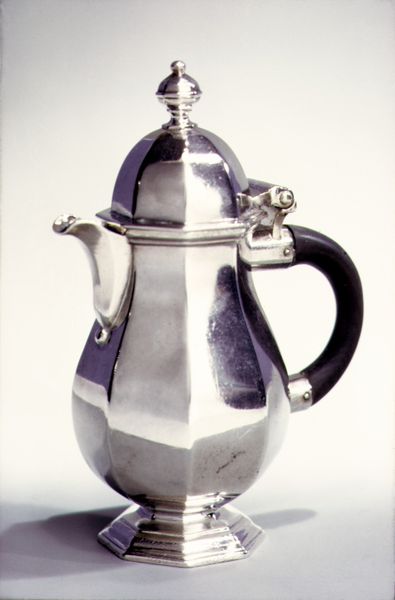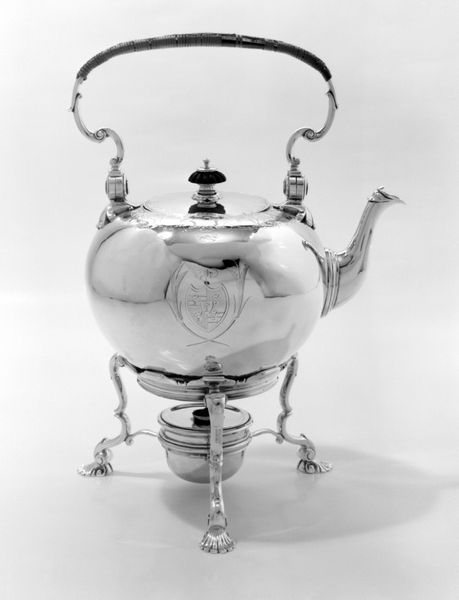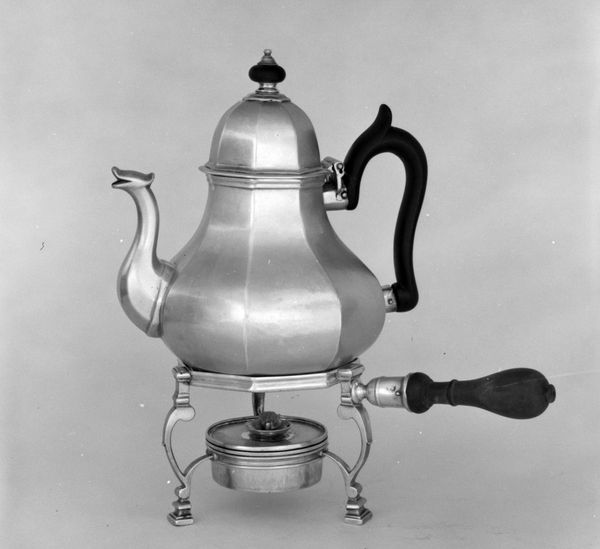
silver, sculpture
#
silver
#
sculpture
#
monochrome
#
decorative-art
#
monochrome
Dimensions: Height: 6 1/8 in. (15.6 cm)
Copyright: Public Domain
Curator: Standing before us is a “Jug with cover,” crafted by James Fraillon around 1717-1718. It's a striking example of early 18th-century silverwork. Editor: My initial impression is one of cool formality, a vessel hinting at rituals and hierarchies. The monochrome palette amplifies this feeling; it is not just silver, but the *idea* of silver, of wealth, of prestige. Curator: Absolutely. Silverware like this was intensely tied to displays of power. This jug, resting in the Metropolitan Museum, would have been part of a larger table setting intended to impress visitors. Consider the social dynamics at play – the careful selection of guests, the strategic arrangement of these objects, all reinforcing status. Editor: I'm curious about the social narratives around who *wasn't* at that table. The shine of the silver throws a shadow; a reflection of those excluded from such gatherings. Who labored to produce this object, and how might their absence speak volumes? Curator: Precisely. These luxury objects were tools within very structured societal hierarchies, often dependent on labor forces whose contributions were intentionally obscured. Looking closely, we see etched details near what might be a coat-of-arms - evidence of the families these pieces served. Editor: A subtle reminder etched right into the vessel of inherited power and lineage. What do you make of the overall form, almost architectural? Curator: Its lines borrow heavily from contemporary architecture – particularly the emerging Palladian style popular at the time. It embodies notions of order and enlightenment ideals about reason and progress. Editor: Perhaps even subtly weaponizing beauty. Objects such as this silver jug served a political role, establishing norms and reinforcing the exclusion and alienation of othered or underprivileged social groups. It begs us to think critically about what artifacts were elevated and showcased within art institutions like the Met – and for whose benefit. Curator: Reflecting on this jug, its smooth surface can become a mirror reflecting on wealth, power, and the people historically distanced from its benefits. Editor: And in contemplating those reflections, perhaps we begin the challenging work of deconstructing antiquated systems of power, demanding equitable redistribution, so that the shadows once cast by luxury, privilege, and exclusion finally begin to fade.
Comments
No comments
Be the first to comment and join the conversation on the ultimate creative platform.


